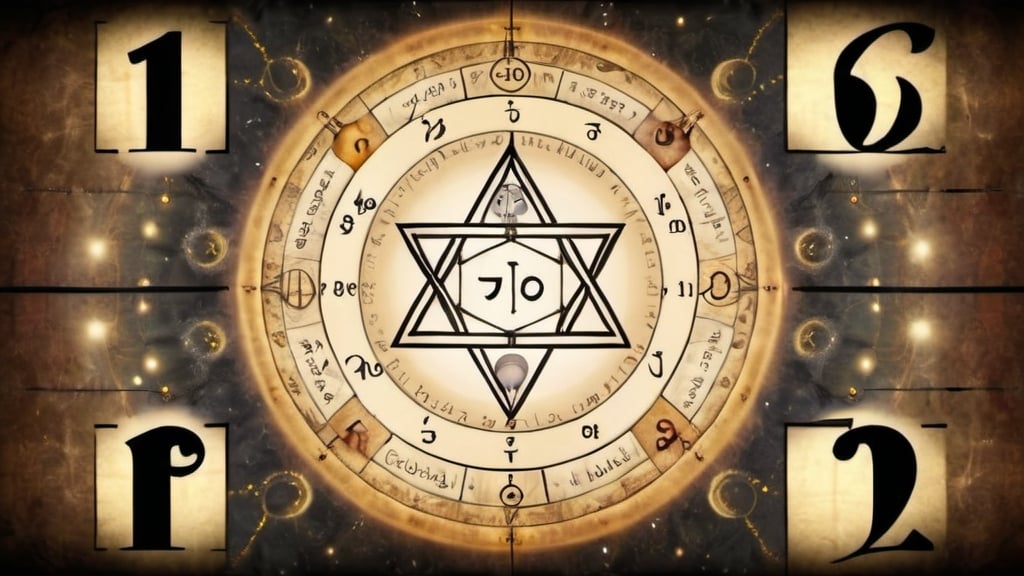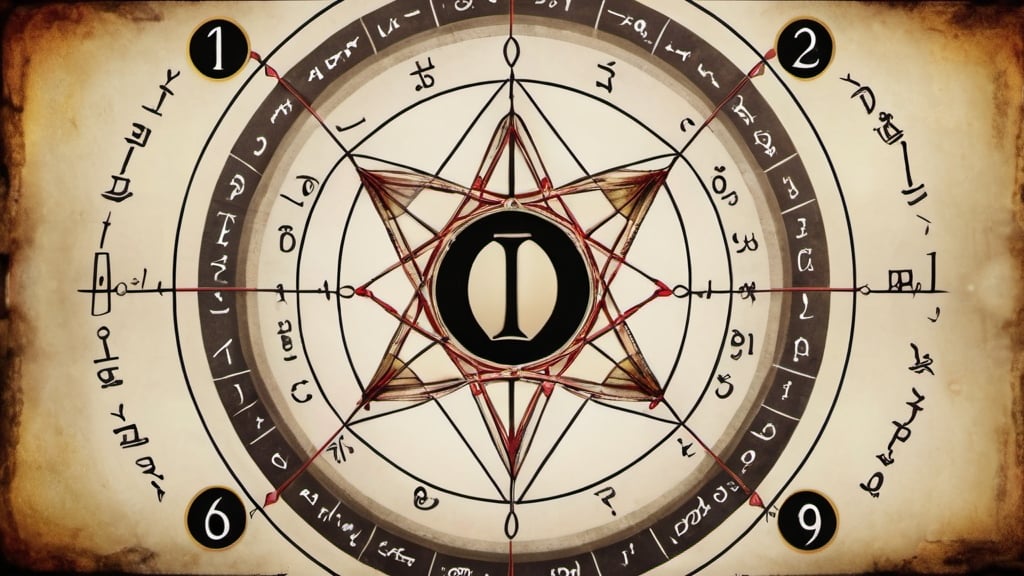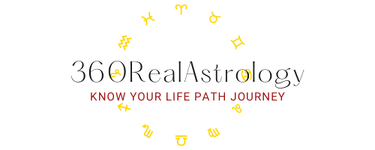Unlock Your Destiny: Beginner’s Guide to Kabbalah Numerology

1. Introduction
Now, an understanding of the theoretical Kabbalah is essential to an understanding of the practical Kabbalah, and without the knowledge of this material, my attempts to understand various Thelemic and Rosicrucian writings and practices have been hindered. Having also delved a little bit into Hermetic qabala, whilst studying alchemical and astrological concepts and their relation to our Great Work, it becomes apparent that this material is based on the Kabbalah and occasionally finds itself confused and/or unalluded in attributions to the more common Tree of Life. I have thus found that this is a subject matter which I cannot avoid.
I have, however, been advised by some individuals more learned in Kabbalah than myself, that I should make a start with the theoretical Kabbalah and especially the Kabbalistic interpretation of the Sepher Yetzirah Gospel of the Golden Dawn, MacGregor Mathers, and Aleister Crowley in particular. It was not until quite recently, however, that I obtained a book on the subject, and my current studies have thus far been limited to parts of the Sepher Yetzirah and the content in Paul Foster Case’s The True And Invisible Rosicrucian Order. This decision was also influenced by my mentor in Thelemic studies who was trying to do an I Ching and Tarot-based analysis on a certain Thelemic cosmological hypothesis which I just did not understand due to lack of knowledge on this subject matter. This is third-handed as I have never read Paul Case.
Coming from a set of beliefs and practices that have grown and coalesced from numerous sources over the last three decades, primarily Rosicrucian, Masonic, and Thelemite, with odysseys into various traditions ancient and modern, East and West, along with significant time spent rooted in so-called “shamanic” practices, my first interest lay in the practical Kabbalah, this being the reason for the tag. I am a ceremonialist by nature, and much of my previous and current practices involve systems of ritual and meditation. The practical Kabbalah, with its diagrams, names, and numbers, seemed like something that would fit right in. This is still my main interest, and you can expect a bias toward this subject matter in writings to come.
Some time ago, I started to study the science of Kabbalah. I did it for several reasons; the main one can be clarified beyond words. I will write down, in the words of a friend who asked me this very question, “You are a practicing occultist and have been for quite a few years now, why the sudden interest in Kabbalah, what does it have that all the other things you have studied doesn’t?” – The words may have been a little different, but the implication was the same, and my main reason for studying it is just to find out the answer to that question. More on that perhaps later, for now let us just say that I have my reasons.
2. Understanding Kabbalah Numerology
The main corpus of the practice comes from the Zohar, which is a collection of 20 books comprising the very heart of Jewish Kabbalistic teaching. The Zohar wasn’t entirely written down until the latter end of the 13th century, and it is a common belief among serious Kabbalists that the Zohar is actually a simple commentary on a greater, hidden work of Kabbalistic and esoteric data that is embedded within the Torah.
Kabbalah Numerology stems from ancient times. It is a belief that everything in the world can be reduced to a number; that the mysteries of the universe are identifiable and knowable through their number representations. The practice is a synthesis of the classic Western mystical and esoteric traditions, with aspects of the Jewish tradition. It is based on Hebrew metaphysics. Although its mainstream reflections are somewhat bastardized versions of the ancient science, the speculative nature of it and the connections it attempts to make from the microcosmic to the macrocosmic universe have intrigued many for centuries.
2.1. What is Kabbalah Numerology?
This complicated system can be easily understood when compared to a computer. The adept programmer seeks to understand hidden aspects of his operating system. The code to be interpreted is the same in its operation, but different systems will offer different results. The Kabbalist seeks to debug and reprogram corrupted data in order to affect better results. The data he seeks is the understanding of the nature of God and his emanations. This traditionally was thought to be the highest form of philosophic meditation, but in today’s terms, it is modern psychology. The people in question are the Kabbalist himself and current social activities that reflect heavily on the state of human id and soul. All of this is understood in its relation to a timeless human condition.
The Kabbalist is one who interprets but never changes the code, as he sees its relevance in revealing hidden aspects of natural law and the resulting effect on the mind of God in man.
Over the centuries, systems have been developed, including the 26 letters of Pythagoras, the division of Romatri into 22 vibrations, and the fusion of the Sephiroth with theories of modern numerology. Each of these systems conveys highly complex philosophical and psychological material to be successful. Today, many Kabbalists and numerologists are skilled in one or more of these systems, as they are usually complementary in their translation of the code.
Kabbalah, a highly complex system of numerology, is a belief in the mystical connection between a number and one or more coinciding events. Both the frustrating complexity of the path and the skill in the interpretation of its code are emphasized in the Kabbalistic tradition. Kabbalah and numerology have long been considered a discipline that has highly intellectual and spiritual attributes.
2.2. The History of Kabbalah Numerology
This possibly independent discovery implies that numerology has a spiritual relevance. Numbers are assigned to letters in the Kabbalistic system and are interchanged to find their hidden meaning. When assigning each of the first 10 numbers in order to the 22 letters of Hebrew, there is a remainder of 7, which are known as the doubles. Time has shown that the meaning of this is actually related to the 7 planets, and these double letters have a connection to the astrological signs of each planet. This further evidence shows that Kabbalah has a relation to ancient astrologies. Now, in the more recent times of modern science, we can find that the 10 primary numbers are actually vibrational levels of electricity. This is the modern definition of number in science. Evidently, these same philosophical meanings keep showing up throughout the history of Kabbalah and in natural science. The science of taking Kabbalistic numerology and finding its meaning in our world today is simply how it connects to all these other systems. This has been the lifetime work of a few dedicated Kabbalists and will be continued into the future.
The age of Kabbalah numerology is unknown. There is evidence that it is actually taken from the ancient Babylonian culture, which flourished during the period 400-300 BC. This is deduced when compared to the meaning of the first ten numbers. The ancient Babylonian culture used a basic numbering system using numbers 1 through 10, and on the Kabbalistic chart, these numbers have the same meanings. The same numerical meanings are also assigned to the numbers from the ancient Greek culture. It is believed that Hebrew culture took this philosophical numerology from the Babylonians and Greeks. This can be evidenced when comparing the meaning of numerology to other ancient cultures that have no relation to Kabbalah or each other. During the time when Jews were held captive in Babylon, Daniel, the prophet, and his friends were initiated and studied the ways of the Chaldeans, where they undoubtedly learned this secret knowledge. This is also the time when Pythagoras came to Babylon to be initiated. Pythagoras later went to ancient Greece where he then taught others the numerology that he had learned in Babylon. It is clear that there was much cross-influence of education between Jews and other cultures in Babylon. Now, if Kabbalah numerology was actually taken from these ancient cultures, it could actually be much older than the Kabbalah scholars claim. It is unlikely that the professors of Kabbalah will admit that their knowledge has outside influence. Another possibility is that Kabbalistic numerology was an independent discovery of these same philosophical meanings. This would make Kabbalistic knowledge much older, but there is simply no evidence that it existed before the Middle Ages.
2.3. The Key Concepts of Kabbalah Numerology
The laws of cause and effect say that everything in the universe happens according to patterns. A cause has an effect and an effect is the result of a cause. Nothing happens by accident. By understanding the workings of the important events that will occur in times to come, this is a powerful tool that can help to alter the future for the better. By altering one’s behavior or taking on a different task, the effects can be changed to offer a better result.
Kabbalah numerology is intricate, but the basic understanding of Kabbalah numerology is that numbers are very important and they affect all areas of our lives. These influences can be mapped out on a chart which is called a Kabbalah chart. This chart is used to relate a person’s name to a number and a number to a meaning. These charts allow for in-depth understanding of the individual and give knowledge of characteristics, jobs best suited for them, their health, and their interactions with others, just to name a few. The chart is a roadmap, which can give deep meaning and understanding to many things that happen in a person’s life; be it fleeting or significant. The guidance and depth the Kabbalah charts give are key to understanding the next concept we will be discussing, which are the laws of cause and effect and the law of attraction.
3. Getting Started with Kabbalah Numerology
Getting started with Kabbalah numerology is fairly simple. The first thing you’ll want to do is find your Life Path number. This number is derived from your birthdate and it is the most important number in your entire Kabbalah chart. Your Life Path number represents what you were born with and the challenges and lessons you will face during this lifetime. Calculating your Life Path number is done by summing all digits of your birthdate and reducing the total with fadic addition. For example, the birthdate 12-25-1992 is calculated as follows: 1+2+2+5+1+9+9+2=31, then 3+1=4 so this person’s Life Path is a 4. Remember to write your birthdate numbers as they are without reduction (15 instead of 1+5).
Your second task after finding your Life Path number is learning to interpret it. The easiest method for doing this is learning about the general characteristics for each number and then examining the specific traits for your own number. Don’t be discouraged if at first it may seem that some of the numbers’ negative traits fit you too well. The negative traits are simply areas where it is possible to discover more about your inner self and learn valuable lessons during this lifetime. Over time, it is said that one should move away from the negative traits and instead focus on the positive, which are areas where you already excel.
3.1. Calculating Your Life Path Number
Crafting a philosophical exercise into an actionable principle, Pythagoras, a Greek philosopher of the late 6th century, postulated that the world is built upon numbers (pointing particularly at the arithmetical, geometrical, and harmonic knowledge) and that the understanding of number properties can give us deep insights into the most profound aspects of the world. It was out of these ancient teachings that the practice of numerology was formed. The life path number is derived from one’s full date of birth (mm/dd/yyyy). It represents the native traits that will be reinforced or changed through experience. This number outlines the path that your life will follow. It describes your abilities and the talents that you will be able to draw upon to make your way in the world, and indicates the tools that you have at your disposal. It also gives an indication of the karmic lesson, which are the things you chose to learn before you incarnated, and that you will master during the course of your lifetime.
3.2. Interpreting Your Life Path Number
Exception: If the month, day, and year reduce to a single digit, stop there. Any one of the 11, 22, or 33 do not reduce further than this and is a legitimate life path number in itself.
Your life path number is a master number.
Next, add the total digits of the month, day, and year to get a single-digit number or master number. Month: 11 Day: 8 Year: 3 11 + 8 + 3 = 22. In this case, this person has a life path number of 22.
Birth Date: November 17, 1983 November is the 11th month so it already stays a double digit. The day of birth is 17. 17 reduces to 8 (1 + 7 = 8). The year of birth is 1983. 1983 reduces to 21, then further reduces to 3 (1 + 9 + 8 + 3 = 21, then 2 + 1 = 3)
Your life path number reveals the essence of who you are and the path you will follow. It is calculated from the numbers in your birth date and it is the most important number in your numerology chart. The life path number is established from the date of birth. First, convert the month to a single number or a master number (November stays 11 rather than 2). Then convert the day of birth and add it to the year, then reduce to a single digit. The example below is calculated for the birth date of November 17, 1983.
3.3. Exploring the Meanings of Numbers
Finally, another useful method for understanding the meaning of the numbers 1-9 involves the use of a proportional representation of knowledge. Since 1 is viewed as God understanding itself, and the higher numbers as a progression towards a material reality, it is known that the Kabbalah system is a religion based on the understanding of the way knowledge filters from the source of light into the material world where we reside. Taking this into account, we can say that the number which represents God understanding itself is directly proportional to any given amount of knowledge. So, in order to find out how much of a certain aspect of knowledge Kabbalists wish to find out about, they must divide the amount of steps it takes to reach that higher understanding by the desired number. This is a useful method for understanding any of the numbers, and the most complex tasks can take a few tries to really grasp the concept, but like most things, the task becomes easier with practice.
One of the most useful and interesting of the core numbers in Kabbalah numerology is the mean of the name. This number is the average of all of the other core numbers of an individual. By finding this number, there is a deeper understanding of how a person’s personality comes together, why certain qualities are more evident than others, and how the real person that a person sees in themselves fits into the world. This number can be found by adding the soul number, the hidden passion number, the expression number, and the personality number together, and dividing by four. This number not only gives a better understanding of a person’s personality but makes it easier for a numerologist to explain a reading to a client who may not understand parts of themselves that are described.

4. Applying Kabbalah Numerology in Your Life
One of the main tenets of numerology is that through the understanding of yourself and the decoding of your destiny or path within this lifetime, you can cultivate greater understanding and awareness. Kabbalistic numerology is based on Hebrew mysticism and the method of Gematria, which assigns a specific number to a letter in the alphabet. Your destiny is attributed to your date of birth and your name. These numbers not only illuminate your path but can also give you insight to help make the best decisions and the correct turns in life.
This can provide the confidence and motivation to work on oneself and, in turn, become the cause to better one’s life. Understanding your positive and negative character traits can encourage you to enhance those which are constructive. We can use specific techniques to help change and remove obstacles that appear in our lives, mentioned in the calculated interpretations. By keeping the knowledge of these numbers in mind, it is possible to analyze and compare the sequential changes in life and the influences that cause them. This can help determine poor decisions or understand mishaps that may have occurred.
4.1. Using Numerology for Personal Growth
To understand the meaning of the number 2 in depth, one can refer to the kabbalistic tree of life to identify where the number is located on the tree and search for the lessons of this sephiroth. The sephiroth of 2 is called Chochmah, meaning wisdom. This is the beginning of all form and is the force which occurs in the very beginning of creation before any form of life. It is a universal, untraceable force free of any characteristics and appears as the vast potential of many possibilities for paths that may be taken. This number onto itself may identify the path that the individual will take how career and personal growth and development an indication that the higher the individual evolves, the closer he will be to being a 11/2. This is just a brief look as to depth one could go into analysis of the number, its an entire method on its own.
As the number 11 is a master number, it will not be reduced to a single digit. This number is special. It has been said that master numbers come with greater lessons to be learned in life. Master numbers can also be a sign of higher spiritual evolution, and this could be true of an individual with an 11 birth number. A simple way to find insight on what each master number actually means, can be found by adding the numbers together so 1+1, to get a single digit number of 2 in this case. This reveals the root of the master number and can be used to distinguish it as an 11/2. Any double digit number can be reduced in this way.
1 (birth day) + 1 (birth month) + 9 (birth year) = 11
Now, by breaking down the birthday in provided example; Jan 1, 1980, we can calculate the birthday using numerology. The birthday is broken down into birth day, birth month and birth year. Adding these numbers together we can get a general idea of the birthday.
One of the most powerful tools that we can use to determine our life direction and our personal growth is our birthday. Birthdays are so significant because it is the day of the year that our specific energy is strongest in the universe. In Kabbalah numerology, the birthday is broken down into three separate numbers, each providing its own look into the persona, path and destiny. Although the full look at the birthday has to be done as an overview of the “tree of life”, we can use the simple method of adding the birth numbers together to determine a main idea of the birthday. By adding the birth day to the birth month, and then adding that number to the reduced year of birth, we have figures that can be reduced to single digit numbers that are key insights to the persona, path and destiny.
Personal growth and development has been a major topic of interest, especially for those in the spiritual communities. There are many different approaches and methods to personal growth, but through using Kabbalah numerology, we can determine our strengths and weaknesses, our deepest inner truth, and where we need to apply our focus in order to align ourselves with our highest potential.
4.2. Numerology in Relationships and Compatibility
Numerology provides an essential tool for learning about the cycles of the various relationships close to you, an understanding of the core influences which affect the quality of your experience, and a great opportunity to improve your own interpersonal and communication skills. The method of relationship compatibility using a technique of reduction to the primary numbers is a translation of those in traditional numerology to the numbers 1-9. These numbers are then used to determine the key features that individuals bring to a partnership, and the results both positive and negative of that interaction, i.e. whether the results of the combination are compatible.
This is an excellent way to understand the dynamics of a relationship, whether it be one of friendship, a partnership, or a living/working situation. An understanding of the strong influence of the moon and other secondary influences such as personal year or Pinnacle numbers can also provide great insight into the ups and downs of the cycles of relationships, sometimes explaining seeming sudden changes in an individual or a partnership. This is a much underused part of traditional numerology, but the wealth of information provided on this site on these topics provides a great opportunity to apply them to the numerology of relationships.
4.3. Numerology in Career and Success
Association of certain numerical values and letters to your own name and birth date will serve as a pattern for your life. While this doesn’t determine or control everything, it does influence your work and living environment, your relationships with both professional and personal acquaintances, and the pursuit of certain goals you set at some point in your life. The direction of your career often changes around the time you change your name. At that point, you transform the energy of one vibration into another.
Different letters in the alphabet are represented by specific numbers, which will transform a name into a different set of numbers, thus altering the type of energies reflected by the person. This can change a job’s potential and its method of accomplishment, sometimes for the better and sometimes for the worse. A person’s name has a significant influence on their work. By incorporating your name’s number into a simple chart to distinguish and categorize the number of each type of vibration, it can help summarize how different letters can influence a career and sway how energies change in different types of work.
4.4. Enhancing Your Spiritual Journey with Numerology
For someone who is taking on a more serious, committed study of Kabbalah, the writings of great Kabbalists can be very difficult to understand. The Zohar is meant to be hidden, and even though its teachings are great, the wisdom is not revealed to one who is not in a correspondingly great spiritual state. Many Kabbalists say that the study of the Zohar cannot bring illumination unless one lives the teachings themselves. This is a very challenging task in today’s busy material world. One relatively easy way to bring the wisdom of Kabbalah into one’s everyday life is through the understanding of their numbers. This can be a starting point or supplement to one’s existing Kabbalistic studies.
According to Kabbalistic belief, the aim of man’s creation is unity with the Creator. It is the journey of each and every soul through a number of incarnations that eventually brings one to his desired state. Using Kabbalistic numerology helps to guide this journey. It is a road map which helps one to understand where they are and also what challenges and/or opportunities are ahead. Knowing this information can help to make better decisions in life. Each and every one of us has a soul correction, areas upon which we need to work on and transform. Again, knowing our numbers can help to understand what these corrections are and what our soul desires of us to become. This information can also provide a sense of relief for many. It helps to see that their past and current struggles in life were not in vain or a string of bad luck. It may be that our soul has chosen these situations as a means to allow for the necessary transformation to better fulfill our purpose. Knowing these numbers can also help to get through challenges and understand the gifts that the future holds.
References:
Petreshak, N. “The Revival of a Person in the Interpretation of Nikolay Berdyaev: Explanation of the Idea of Sobornost’on the Example of Kabbalistic Concept about Adam Kadmon.” Logos i Ethos, 2021. upjp2.edu.pl
Rothenberg, Naftali. “Harmony of Mind and Body.” Love as Common Ground: Essays on Love in Religion (2021): 123. [HTML]
Sclar, D. “Perfecting Community as One Man.” Journal of the History of Ideas, 2020. [HTML]
Gondos, A. ““To Know Everything”: Encyclopedias and the Organization of Kabbalistic Knowledge.” European Journal of Jewish Studies, 2022. [HTML]
Duhan-Kaplan, L. “Sacred Fellowship Among Learners: A Kabbalistic Pedagogy for Our Times.” Multireligious Reflections on Friendship, . academia.edu
Kiperwasser, R. “Definitions of the Human Body and the Order of Creation in Rabbinic Literature.” Jews and Health, 2023. [HTML]
Baumgarten, E. “God as a Printer: On the Theological Status of Printing in the Kabbalistic Tradition of Israel Sarug.” Zutot, 2022. [HTML]
Gocgen, A. F. “Basically Jewish Kabbalah and Similarity to Hinduism.” 2022. preprints.org
Pollock, B. ““The Kabbalistic Problem is not Specifically Theological”: Franz Rosenzweig on Tsimtsum.” Tsimtsum and Modernity, 2020. [HTML]
Mottolese, Maurizio. “The Imagery of Cosmic and Human Orders: Semantic Dimensions of Kabbalistic Semiotics.” Cultic and Further Orders: Semiotics of a Kabbalistic Culture. Brill, 2022. 59-100. [HTML]








Connect me